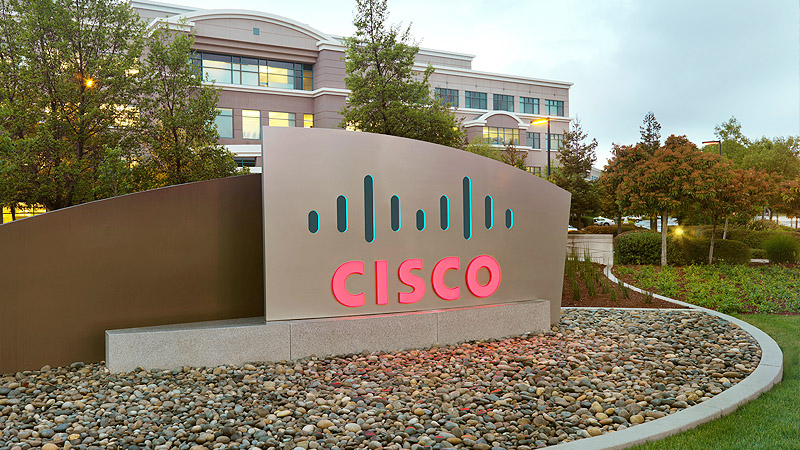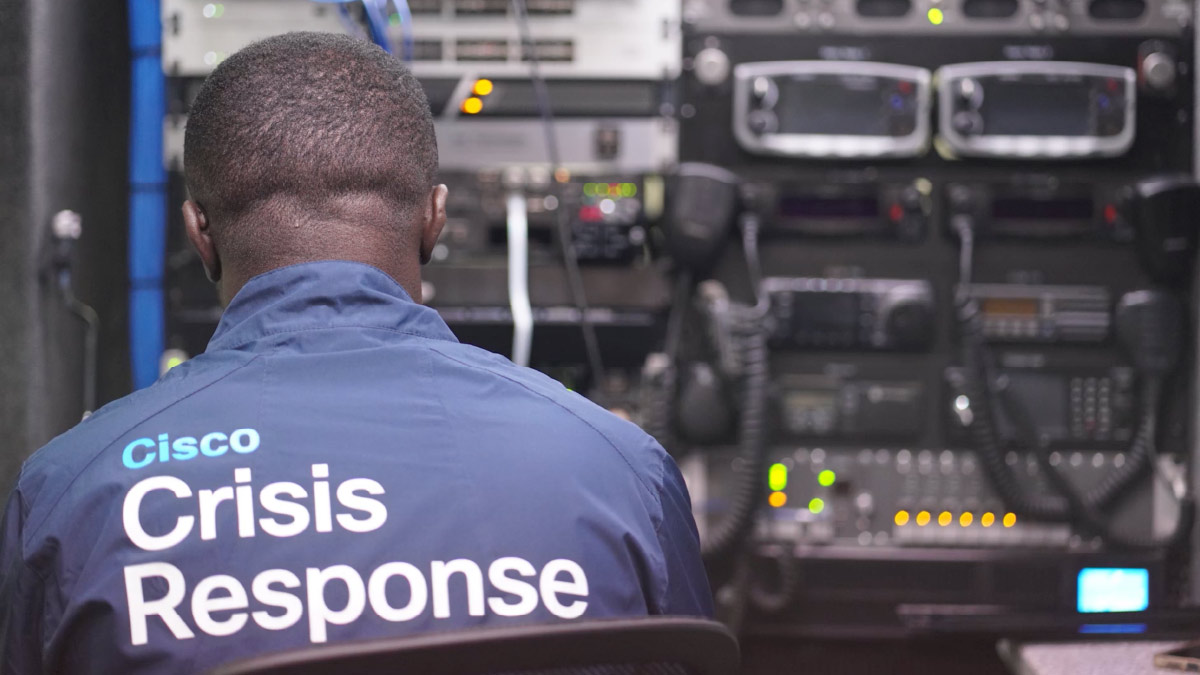Cisco's Five-Point, Multi-Phase Enterprise VPN Solution Set Cost-Effectively Extends Classic WAN Infrastructures to Meet Enhanced Security, Scalability and Management Requirements of Virtual Private Networks
- More information about Enterprise Virtual Network Solutions
- Related Release: Cisco Delivers New Levels of Management and Security Enhancing the Classic Wide Area Network and Simplifying Operations of VPNs
SAN JOSE, Calif. -- January 18, 1999 -- Cisco Systems Inc. today announced a comprehensive Enterprise Virtual Private Network (E-VPN) strategy and suite of new VPN solutions. Spanning five key components required to successfully deploy a VPN-scalable platforms, security, services, appliances and management-Cisco's E-VPN strategy and solution set features open, standards-based architecture, scalable solutions and end-to-end networking capabilities.
New products and features unveiled today extend Cisco's VPN-enabled router platforms with Cisco IOS. software enhancements, including IPSec acceleration on the Cisco 7500 and 7200 high-end router series, as well as firewall feature set extensions and VPN service level agreement (SLA) monitoring services. Also announced are enhancements to Cisco's industry-leading family of security appliances, including the NetSonar 2.0 security scanner for Windows NT and NetRanger 2.2 intrusion detection system. In addition, today's announcement incorporates a supporting suite of management tools, including Security Manager 1.0, Access Control List (ACL) Manager 1.0 and Internetwork Performance Monitor (IPM) 2.0.
Complementing existing private enterprise network capabilities, VPNs extend geographic connectivity to telecommuters, mobile users and remote offices-as well as to new constituencies, such as customers, suppliers and partners. VPN benefits include reduced service costs and long distance/usage fees, as well as lightened infrastructure investments and simplified wide area network (WAN) operations over time. Most importantly, VPNs are fundamental for enterprises to achieve global reach and ubiquitous access-enabling new business applications in the Internet economy.
"Cisco's family of VPN-enabled routers allows enterprises to complement their classic WAN networks with a smooth migration to the extended connectivity enabled by virtual private networking," noted Richard Palmer, VP of Enterprise WAN Marketing for Cisco's Enterprise line of business. "Our entire line of router platforms are easily VPN-enabled with Cisco IOS software enhancements-making Cisco's installed base of nearly 10 million ports VPN-ready today. By coupling the extensive VPN services provided by Cisco IOS software with VPN-optimized router platforms, enterprises can implement secure, scalable and manageable VPNs immediately," said Palmer.
"We dramatically improved our network with just a few simple software upgrades to existing Cisco routers-essentially augmenting our internal infrastructure to accommodate VPN capabilities," said Berkeley Keck, director of IT for the United Network for Organ Sharing (UNOS). "Throughout this process, Cisco's service and support group has proven itself on numerous occasions-they promised reliability that we could count on, and it's been there. As a result, we are extending our VPN to tap the Internet for universal reach to hundreds of transplant centers, organ procurement organizations, doctors and patients-providing access to data which puts the term 'mission critical' in true perspective. Cisco's solutions meet all our needs for this endeavor-reliability, security and a low-cost infrastructure migration," said Keck.
Cisco's E-VPN Strategy
Cisco's comprehensive five-point, multi-phase E-VPN strategy and solution set integrates full-service, VPN-optimized routers with enhanced security capabilities and advanced services. As a result, customers can incrementally add VPN functionality to their existing WAN infrastructures-accommodating the security, scalability and management requirements associated with remote access, intranet and extranet VPNs.Phase I of the solution set includes Cisco's entire line of classic WAN products, software and services. Today's launch, phase II, unveils new solutions tailored specifically for E-VPNs. Delivered over the next two years, phases III and IV will feature accelerated VPN and enhanced multiservice VPN capabilities. Each phase within Cisco's strategy is backed by full pre- and post-sales service and extended by key technology and support partnerships. Cisco is currently working with Microsoft for synergy between directory-enabled components, as well as VeriSign and Entrust for IPSec compatibility.
Scalable VPN Platforms
Cisco's portfolio of VPN-optimized platforms integrates VPN functionality, high-speed encryption, security and bandwidth management with WAN connectivity to reduce VPN network complexity and costs. The product family includes the Cisco 7500, 7200 VXR and 7200 high-end routers for enterprise and regional office environments, as well as the Cisco 3600, 2600, 1720 and 800 routers for small regional and branch offices and telecommuters. Offered in a wide range of price-performance points, these systems are extensible by Cisco IOS software upgrades. All Cisco VPN routers are fully interoperable, providing scalable end-to-end links from the campus to the service provider WAN for data, voice and video communications at narrowband and broadband speeds.To provide scalable performance for VPN applications, Cisco is offering distributed IPSec software acceleration for Cisco 7500 series routers, utilizing its advanced Versatile Interface Processor (VIP) series line cards. Integrated hardware-based acceleration for IPSec encryption is also available-first implemented as an integrated service adapter (ISA) card for the Cisco 7500 and 7200 systems, followed by the Cisco 3600, 2600 and 1700 series. Integrating DES and 3DES IPSec encryption and IPPCP compression services with industry-standard IPPCP protocols, the ISA card enables data compression before encryption activities to reduce the amount of data sent over the network, therefore increasing available bandwidth to the WAN.
Extensive Security
To enable secure virtual private networking, Cisco offers a broad range of VPN security features, including tunnels and encryption, packet authentication, firewalls and intrusion detection, as well as user authentication. These complementary mechanisms provide security at different points throughout the network, and are all required for comprehensive VPN security. By integrating many of these features within Cisco IOS software, users can transparently secure the network infrastructure with a simple software upgrade.New security services include 3DES, time-based ACLs, CiscoSecure with PKI support, as well as the feature-rich Cisco IOS firewall feature set extensions, which increase network security and lower cost of firewall operation. The firewall feature set is now supported on the Cisco 7200, in addition to previous availability on the Cisco 1600, 1700, 2500, 2600 and 3600 routers. (For security-related product introductions and news, see related press release, "Cisco Delivers New Levels of Management and Security Enhancing the Classic Wide Area Network and Simplifying Operations of VPNs," dated January 18, 1999.)
Advanced VPN Services
VPN solutions need to provide the same predictable performance and service levels as private WANs, including guaranteed bandwidth and control over differentiated services and applications. Augmenting the QoS mechanism employed within a service provider's VPN architecture, Cisco enables enterprise businesses to enforce priorities and bandwidth allocation among various applications and users.With Cisco IOS software release 12.0, Cisco has extended its rich set of QoS features and mechanisms to support VPN deployments on a wide range of Cisco router platforms, including advanced IP QoS for mid-range and remote router families. To validate and monitor service providers' adherence to SLAs, Cisco is embedding a service level monitoring Response Time Reporter (RTR) to allow measurement of round-trip latencies through a virtual private network.
VPN-Optimized Appliances
A key complement to Cisco's router-based VPN capabilities, specialized appliances offer firewall and security auditing capabilities-allowing enterprises to ensure both the reliability and security their VPN is providing. Cisco's VPN-enabled appliances include PIX Firewalls, the NetRanger intrusion detection system and NetSonar security scanner. (See related press release, "Cisco Delivers New Levels of Management and Security Enhancing the Classic Wide Area Network and Simplifying Operations of VPNs," dated January 18, 1999.)VPN Management: Service Management and Policy Control
VPNs require cohesive, policy-based management capabilities to bridge both existing management systems and the unique VPN infrastructure. Cisco's VPN management portfolio addresses this challenge by integrating key capabilities to ensure a centralized and smooth integration of the private WAN and VPN.Cisco's new Security Manager 1.0 policy management software extends Cisco's end-to-end security solution, while the CiscoWorks2000 family adds WAN monitoring extensions and reduced access list management complexity with the delivery of IPM and ACL Manager software releases. (See related press release, "Cisco Delivers New Levels of Management and Security Enhancing the Classic Wide Area Network and Simplifying Operations of VPNs," dated January 18, 1999.)
Availability
IP QoS, 3DES and RTR features are all incorporated within Cisco IOS software version 12.0, and are available immediately. Software IPSec acceleration for the Cisco 7500 is available in a subsequent release of Cisco IOS 12.0, followed by hardware acceleration for the Cisco 7200 and 7500 systems beginning in the first half of 1999.Cisco Systems
Cisco Systems, Inc. (NASDAQ:CSCO) is theworldwide leader in networking for the Internet.NetSonar, NetRanger and Pix Firewall are trademarks and Cisco, Cisco IOS, Cisco Systems, and the Cisco Systems logo are registered trademarks of Cisco Systems, Inc. in the U.S. and other countries. All other trademarks mentioned in this document are the property of their respective owners.



